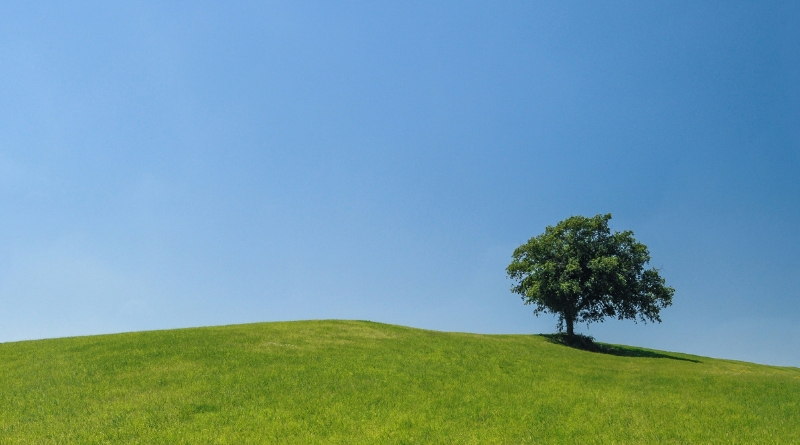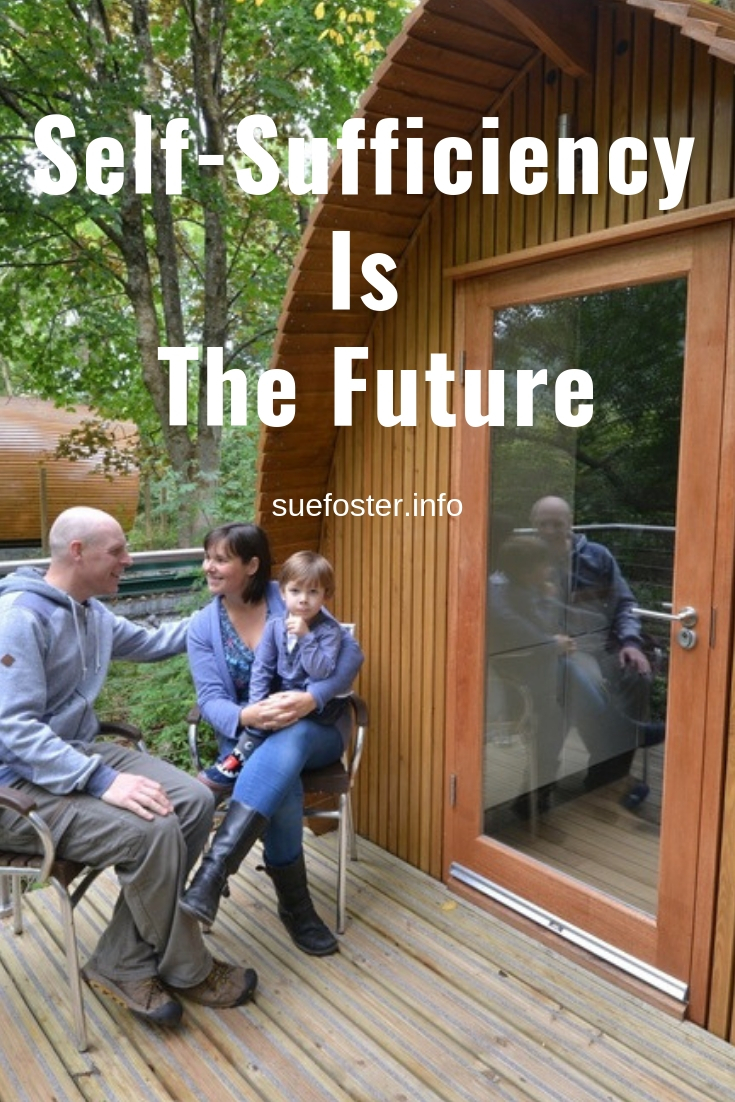Collaborative post.
In October 2018, Storm Callum took the UK by surprise, grounding several flights as a result of the heavy rain and strong winds. Its effects were devastating on countless businesses and households, as it left numerous properties – both residential and commercial – without electricity across southwest England and Wales. In the Republic of Ireland, around 20,000 homes were impacted by the storm.
Nothing makes you more vulnerable than when your power supplies are suddenly cut. Your homes are not equipped to stay warm and cosy without electricity. Your food supply is likely to go bad if the power can’t be restored rapidly. You may not have any other means to get in touch with your relatives and friends other than relying on power supplies.
In other words, Storm Callum is a terrifying reminder of all we depend on local providers, governments, and national grids to get by every day. More worryingly, other supplies such as food access and freshwater could also be affected in a long-term power cut. Even if you’re not trying to paint a dramatic doomsday future, there’s no denying that our everyday comfort is built on reliable solutions on which we have no influence. When the solutions fail for any reason, we are left defenceless and exposed to the mercy of the elements.

The growing appeal for a self-sufficient lifestyle is the result of confronting your worst fears; Indeed, as more and more individuals tap into the “what if” game – What if there was a power cut? They begin to realise that self-sufficiency is not a thing of the past; it is the future of humanity.
Indeed, events such as dramatic weather alerts act as a reminder of your household dependency on availability, distribution, and capacity of energy, water, heating and food systems. More importantly, in an economic situation where prices are going up, it appears crucial to gain back some form of control over fluctuating costs and community services.
Why buy what you can grow at home?
How much do you spend on food each month? As a rule of the thumb, couples are more indulgent and can spend up to £400 a month. Families tend to be more careful of their budget and can pay roughly around £250 a month for up to three children. One-person households tend to spend as little as £125 a month on grocery shopping.
Whether you’re confident with your budget management skills or not, at the end of the year, your monthly food expenses can add up. You could, however, save a considerable amount of money if you were to grow your own vegetables.
Indeed, growing your own food will not only reduce your shopping costs but also affects your driving or delivery costs. If you’re set on building an indoor garden, this can influence your choices of vegetables – some are ideal for indoor growth while others are best suited for an outdoor environment.
As a gardener, you can also embrace the principle of repurposing already available resources, such as turning your organic waste into compost and using large water tanks to catch rainwater. Maximising natural resources can dramatically reduce your costs – as it can be expensive to buy fertilisers and water. Additionally, growing your food at home makes you less reliant on supermarkets; and therefore less vulnerable in case of shortages.
What would you say if you knew you didn’t need to drive to the pump ever again?
The yellow jacket movement that started in France has outgrown its purpose and reached out to other countries as a general movement of discontentment towards society and politics. At its core, however, the reaction was a response to the planned increase in fuel prices in France.
It’s easy to understand the French neighbours; with commute time averaging one hour, the population is not ready to pay more than necessary to get to work. Additionally, too many companies are reluctant to embrace remote working options, leaving commuters with no other alternative than stretching out their budget.
Consequently, if you’re wondering what our British approach should be regarding a potential price increase at the pump, there’s something that could be even more effective than a march. You could make your fuel. Indeed, you can produce both ethanol and biodiesel at home; however, it comes at a cost too.
Making ethanol starting is fermenting feedstocks such as corn or wheat – which you need to buy in the first place or grow specifically for this purpose. Biodiesel, on the other hand, requires engine modifications as well as a method to cook waste vegetable oil to crack its chemical structure.
What about your energy supplier?
You can’t carry on with your typical energy supplier when you’re considering self-sufficiency. You need to go off the grid. For your typical rural homeowner, off-grid electric power generation requires dedicated structures, such as solar panels, a wind turbine, a battery bank and an inverter, and a generator.
The first lesson you need to learn, though, is that generating enough power for one house requires a combined approach. Your solar panels and wind turbine won’t be enough. Consequently, when you can’t control the weather, you need to learn to use your generator as a backup battery at all times.
Additionally, the fact you don’t pay for the energy doesn’t mean that it is free to produce and store. Indeed, the equipment you require is expensive, which adds a new dimension to the dream of a self-sufficient household.
How do I flush?
Every day, people go to the toilet between six and seven times in a day, but this can vary slightly depending on your activity levels, your health and your eating habits. But, the truth is that your self-sufficient home can’t afford to ignore the loo.
While it might be the smallest room in the house, it has a tremendous impact on your water management solution. How do you flush when you’re not connected to any collective sewage? More importantly, can you flush at all?
Typically, off-grid households use a sewage treatment operation that recycles grey water disposes of black water – once treated. Most off-grid properties add a septic tank with an additional drainage field that meets the Environmental Agency soakaway tests.
Alternatively, you can use a cesspool, which is currently authorised in England and Wales, but this is an inefficient method of managing your wastewater. However, the preferred approach is to build a miniaturised water treatment facility, which is expensive.
How do I stay warm in winter?
What should you do to heat the house in winter when there’s no electric heater? A wood furnace is a sustainable approach that can be cost-effective if you have an abundant supply of wood available.
Geothermal heat can offer a manageable alternative, using the ground to warm up or cool down the house, depending on the season. The setup, however, can be both time and cost-demanding and therefore difficult to use in a residential property.
Additionally, a geothermal system needs to be connected to both your water and electricity systems, which can be problematic if you struggle to maintain and manage your resources.
Building your own home
As surprising as it might sound, the idea of living off-grid is an appealing lifestyle, despite its challenges and difficulties. As a result, more and more homeowners are looking into the possibilities of building a hands-on property on a budget.
Tiny homes enable Millennials to buy and develop a property for as little as $500 – the equivalent of £390. Using recycled material and smart-building tricks, tiny houses are appearing all around the world. They are a symbol of a movement by the young generation of adults who want to explore cost-friendlier solutions in their everyday lives.
Interior decor enthusiasts have already discovered the benefits of minimalism, but homeowners are now taking it one step further by creating small and almost entirely self-sufficient homes that keep their costs low and their independence high.
The dream of the planet-friendly home
However, the vision of a self-sufficient home is built on a selfish background, which ultimately affects its success. You shouldn’t aspire to become self-sufficient to keep your costs low. While you’ll find your budget more manageable when you cut down your reliance on collective systems, you need to shift your focus to see the bigger picture.
Indeed, water and waste management, as well as energy production in communities, have affected the environment. Tonnes of plastic waste is poured into the oceans, killing marine life as we make no move to decrease our waste generation, for instance.
The mass production of electricity contributes to the greenhouse effects, affect the ozone and causes acid rains, ultimately happening as you read this article. Going self-sufficient should not be about your bills, but your responsibility toward the planet and the future of the ecosystem. Consequently, if the future is in an off-grid property, it should put the environment as a priority, ensuring that the technology and material we use to provide the most natural solution.
While we are becoming aware that our collective approach to housing is flawed, our reasoning is wrong. It isn’t faulty because it’s expensive – we, the people, make the rules and the prices. It is faulty because it destroys the planet. As the self-sufficient movement is still in its infancy, it is time for homeowners to build a green home for themselves and their children.
Further reading on self-sufficiency:
The New Complete Book of Self-Sufficiency: The Classic Guide for Realists and Dreamers – The new edition of this enduring classic from John Seymour, the founding father of modern self sufficiency, is the key reference to sustainable living off the grid.


